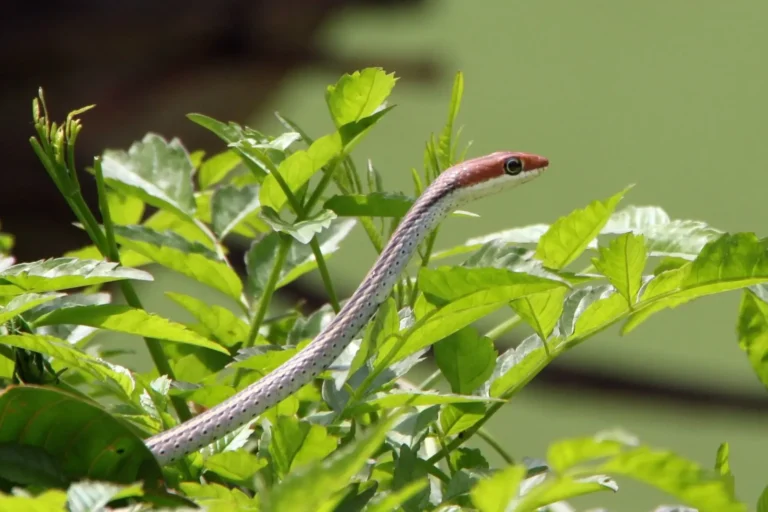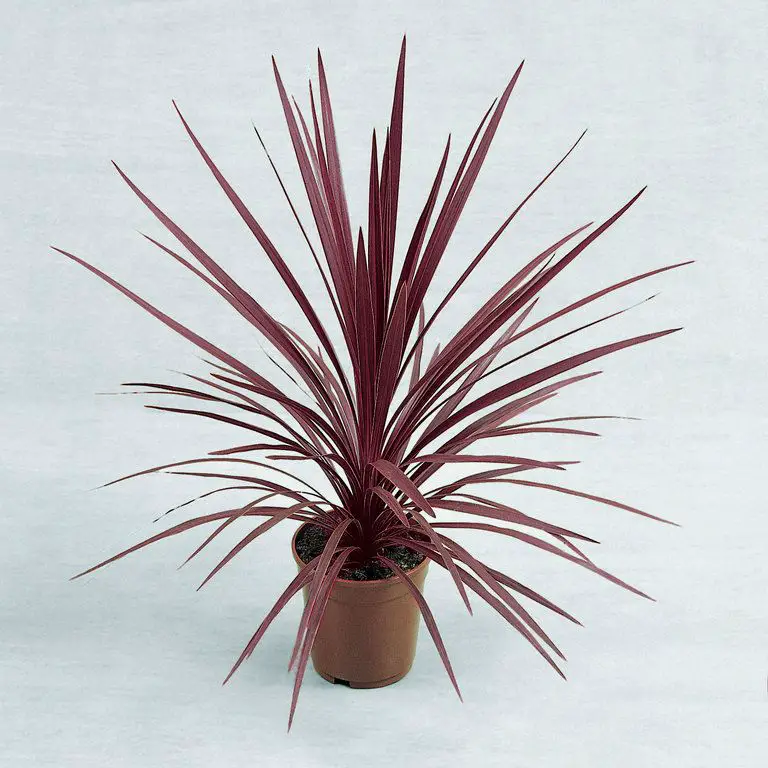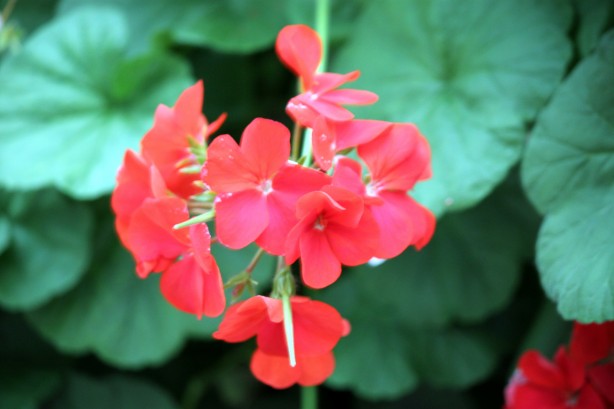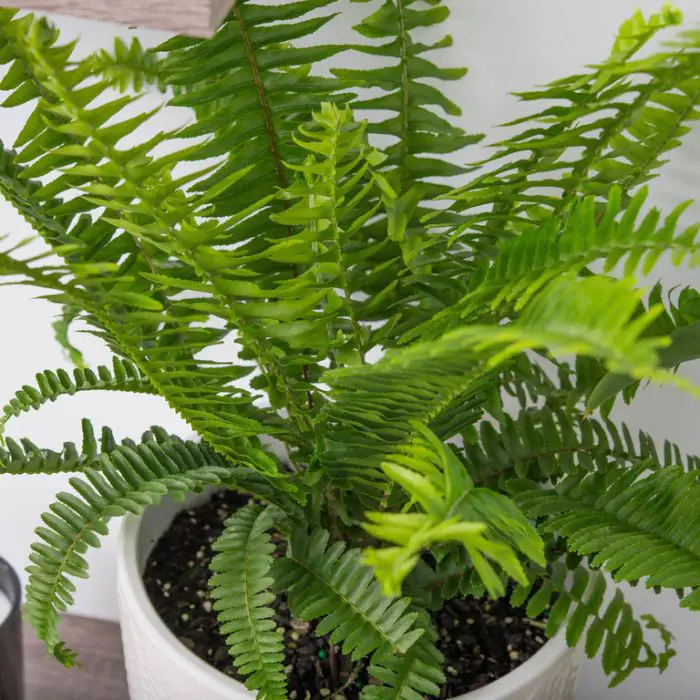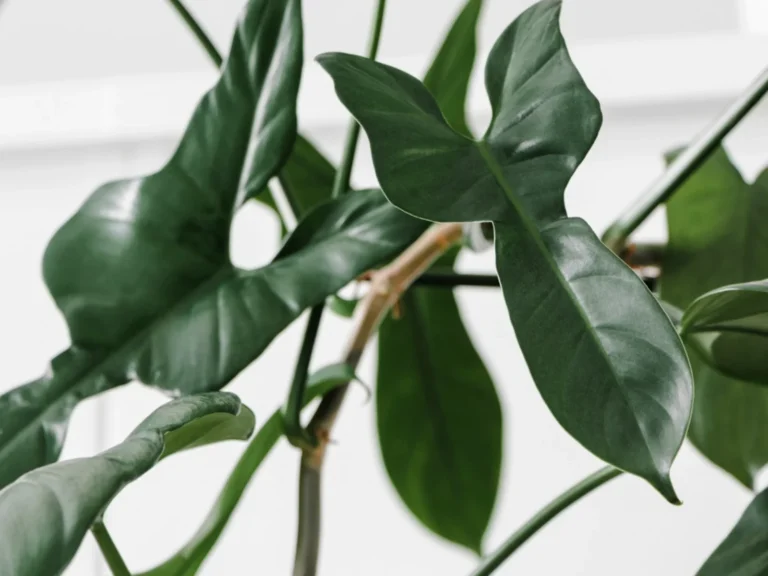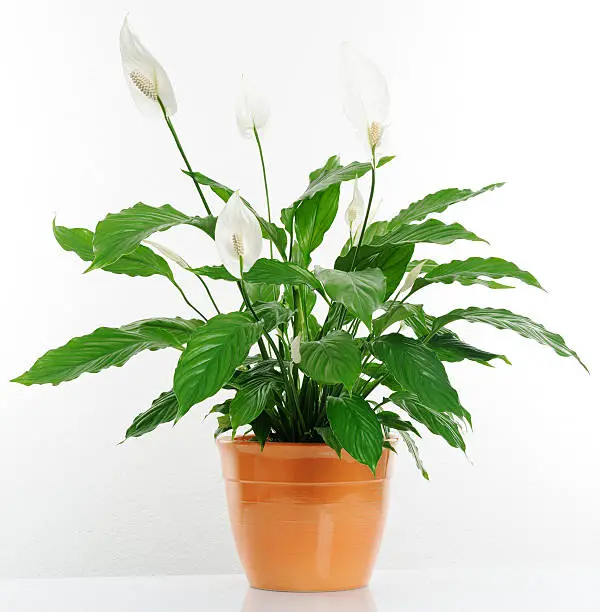1. Cape jasmine (Gardenia) Fragrant Flowers plant

- Scientific name: Gardenia jasminoides
- Common name: Cape jasmine, gardenia
- Family: Rubiaceae
- Origin: China
- Growth habit: Evergreen shrub or small tree
- Height: 3-6 feet (1-2 m)
- Spread: 3-5 feet (1-1.5 m)
- Leaves: Glossy, dark green, ovate or lance-shaped
- Flowers: White or pale yellow, fragrant, tubular-shaped
- Bloom time: Spring to summer
- Soil: Well-drained, fertile, and rich in organic matter
- Sun exposure: Partial to full shade
- Water needs: Water regularly, keeping the soil moist but not soggy
- Fertilization: Fertilize monthly with a balanced fertilizer during the growing season
- Pests and diseases: Susceptible to mealybugs, scale, and aphids
- Hardiness zone: 8-11
- Indoor care: Place in a bright, indirect light location and water regularly
- Propagation: By stem cuttings or air layering
- Medicinal properties: Considered to have antifungal and antibacterial properties, its fruit is an antiseptic and can be applied to callous ulcers, sores, aching teeth, scalds, burns and swellings. It is also used to cure jaundice.
- Other uses: The flowers are used in perfumes and the leaves are used to make tea.
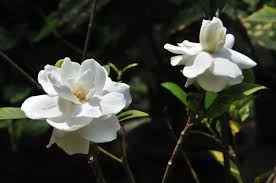
History of Cape Jasmine
- Cape jasmine (Gardenia) is native to China, where it has been cultivated for centuries. It was introduced to Europe in the 17th century and to North America in the 18th century. The plant is named after the Cape of Good Hope, where it was first encountered by European explorers. National flower
- : Cape jasmine is the national flower of South Korea. It is also the official flower of the city of Atlanta, Georgia.
- Cultural significance: Cape jasmine is a popular ornamental plant in many cultures. It is often used in gardens, patios, and potted plants. The flowers are also used in perfumes and other fragrances. In some cultures, cape jasmine is considered to be a symbol of love, purity, and beauty.
- Symbolism: The flower of cape jasmine is often associated with love, purity, and beauty. In some cultures, it is also seen as a symbol of fidelity and devotion.
- Uses: The flowers of cape jasmine are used in perfumes and other fragrances. The leaves are also used to make tea. The plant has some medicinal properties, and the fruit is used to treat a variety of ailments.
Here are some additional points about cape jasmine:
- The plant is evergreen and can grow to be 6 feet tall.
- The flowers are white or yellow and have a strong fragrance.
- Cape jasmine is a relatively easy plant to care for.
- It prefers partial shade and moist, well-drained soil.
- The plant can be propagated by stem cuttings or air layering.
Blooming Beauty: The Red Azalea Plant
2. Hyacinth (Dutch hyacinth, garden hyacinth) A Fragrant Flowering Plant
- Scientific name: Hyacinthus
- Common names: Hyacinth, Dutch hyacinth, garden hyacinth

- Genus: Hyacinthus
- Scientific name: Hyacinthus
- Family: Asparagaceae
- Subfamily: Scilloideae
- Number of species: About 30
- Native range: Mediterranean region, Middle East, Central Asia
- Most common type: Hyacinthus orientalis
- Flowers: Fragrant, arranged in dense spikes
- Colors: White, yellow, pink, red, blue, purple
- Bloom time: Late winter to early spring
- Growing conditions: Well-drained, fertile soil; full sun to partial shade
- Water needs: Moderate
- Hardiness zone: 4-8
- Propagation: By dividing the bulbs or by seed
- Toxicity: The bulbs of hyacinths are poisonous if ingested.
- Symbolism: Grief, mourning, rebirth, new beginnings
- Uses: Cut flower, dried flower, perfumery

History of Hyacinth
The hyacinth has a long and rich history. It was first cultivated in the Middle East in the 16th century, and it quickly became popular throughout Europe. The hyacinth was introduced to North America in the 17th century, and it has been a popular garden flower ever since.
The hyacinth is named after Hyacinthus, a beautiful youth who was killed by a discus thrown by Apollo. The blood of Hyacinthus was said to have turned into the hyacinth flower. This myth is the source of the hyacinth’s symbolism for grief and mourning.
National flower
The hyacinth is the national flower of the Netherlands. It is also the official flower of the city of Haarlem, Netherlands. The hyacinth is a popular symbol of the Netherlands, and it is often used in decorations and souvenirs.
Cultural significance
The hyacinth has a different cultural significance in different countries. In the Netherlands, the hyacinth is a symbol of spring and new beginnings. In Greece, the hyacinth is a symbol of grief and mourning. In China, the hyacinth is a symbol of wealth and prosperity.
Symbolism
The hyacinth has a variety of symbolic meanings. It is often associated with grief, mourning, rebirth, new beginnings, joy, playfulness, and sincerity. The color of the hyacinth can also affect its symbolism. For example, white hyacinths are often associated with purity and innocence, while blue hyacinths are associated with sincerity and constancy.
Uses
Hyacinths are used for a variety of purposes. They are a popular cut flower, and they are also used in arrangements and bouquets. Hyacinths can also be grown indoors or outdoors, and they are a popular choice for spring gardens. The bulbs of hyacinths can also be used to make perfume.
Additional information
Here are some additional facts about hyacinths:
- The hyacinth is a member of the lily family.
- The hyacinth is a bulbous plant, which means that it stores food in its bulbs.
- The hyacinth is a fragrant flower.
- The hyacinth is a relatively easy plant to grow.
- Hyacinths are toxic if ingested.
Red Begonia: A Stunning Beauty For Your Garden
3. Lilac (Common Lilac, French Lilac)
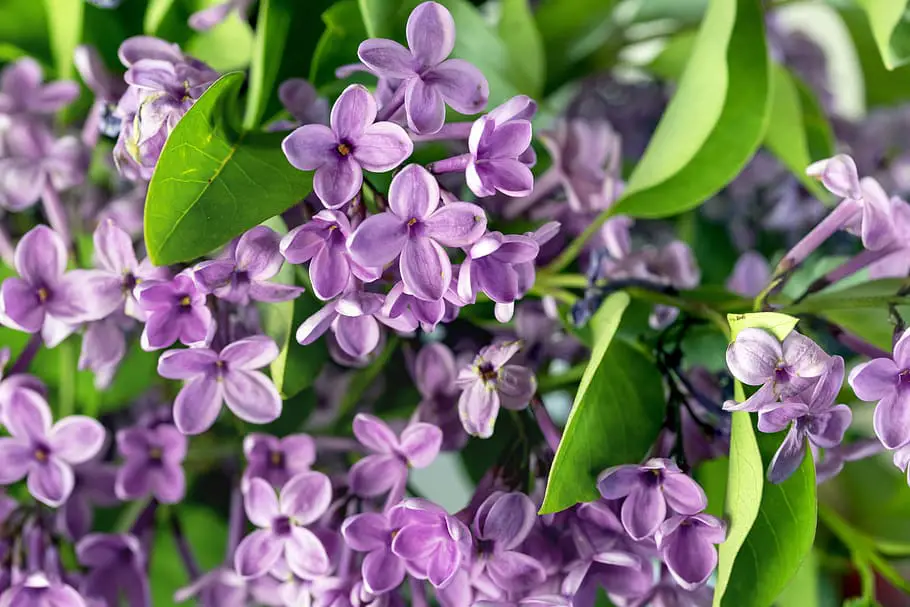
Basic Information
- Scientific name: Syringa vulgaris
- Common names: Lilac, common lilac, French lilac
- Family: Oleaceae
- Genus: Syringa
- Origin: Balkan Peninsula
- Height: 6-12 feet (1.8-3.6 m)
- Spread: 6-8 feet (1.8-2.4 m)
- Bloom time: Late spring to early summer
- Flower color: White, pink, purple, blue, or yellow
- Flower scent: Strong, sweet
- Leaves: Elliptical, 2-4 inches (5-10 cm) long
- Hardiness zone: 3-7
- Soil: Well-drained, fertile soil
- Sun exposure: Full sun to partial shade
- Water needs: Moderate
- Propagation: By seed, cuttings, or layering
- Toxicity: The leaves and bark of lilacs are poisonous if ingested.
- Uses: Ornamental shrub, cut flower, hedge
- Symbolism: Love, happiness, friendship
- History: Lilacs have been cultivated for centuries and are native to Europe and Asia.
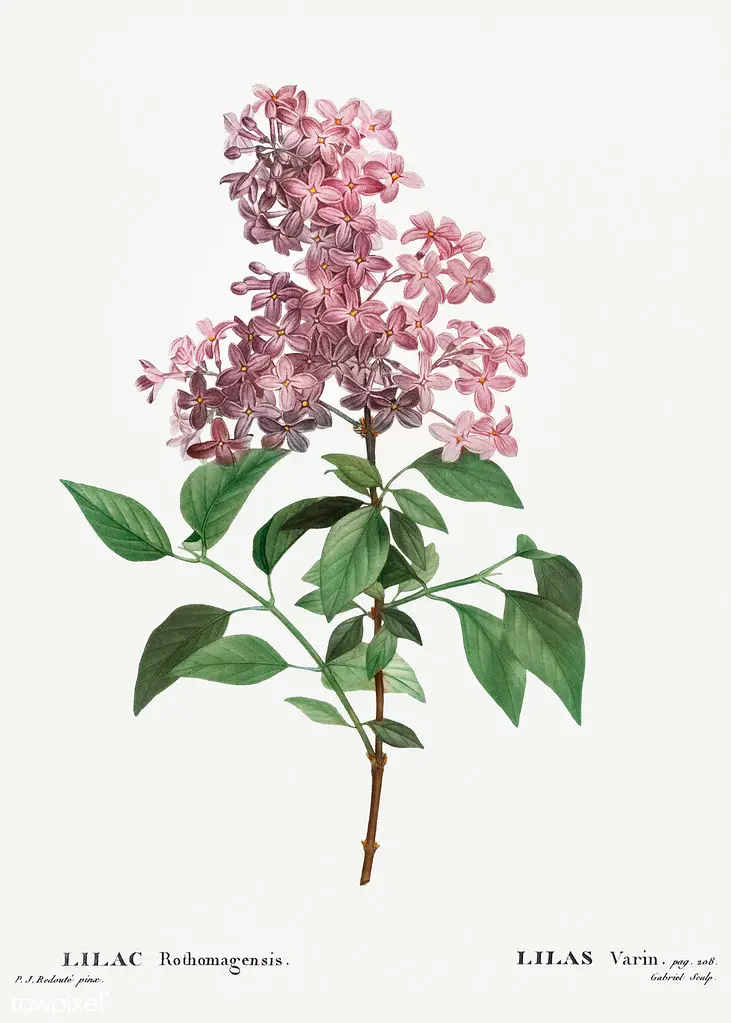
History of Lilac
Lilacs have been cultivated for centuries and are native to Europe and Asia. The first recorded mention of lilacs dates back to the 4th century BC, when they were mentioned by the Greek physician Hippocrates. Lilacs were introduced to North America in the early 17th century, and they quickly became popular garden shrubs.
National flower
The lilac is the state flower of New Hampshire. It is also the official flower of the city of Paris, France. The lilac is a popular symbol of spring and new beginnings, and it is often used in decorations and souvenirs.
Cultural significance
The lilac has a different cultural significance in different countries. In France, the lilac is a symbol of love and happiness. In Japan, the lilac is a symbol of friendship. In China, the lilac is a symbol of longevity.
Symbolism
The lilac has a variety of symbolic meanings. It is often associated with love, happiness, friendship, spring, and new beginnings. The color of the lilac can also affect its symbolism. For example, white lilacs are often associated with purity and innocence, while purple lilacs are associated with royalty and power.
Uses
Lilacs are used for a variety of purposes. They are a popular ornamental shrub, and they are also used as cut flowers. Lilacs can also be made into essential oils, and they have been used in traditional medicine for centuries.
Additional information
Here are some additional facts about lilacs:
- The lilac is a member of the olive family.
- The lilac is a deciduous shrub, which means that it loses its leaves in the fall.
- The lilac is a fragrant flower.
- The lilac is a relatively easy plant to grow.
- Lilacs are toxic if ingested.
Unraveling The Beauty Of The Dove Orchid
4. Jasmine (jessamine) A Fragrant Flowering Plant
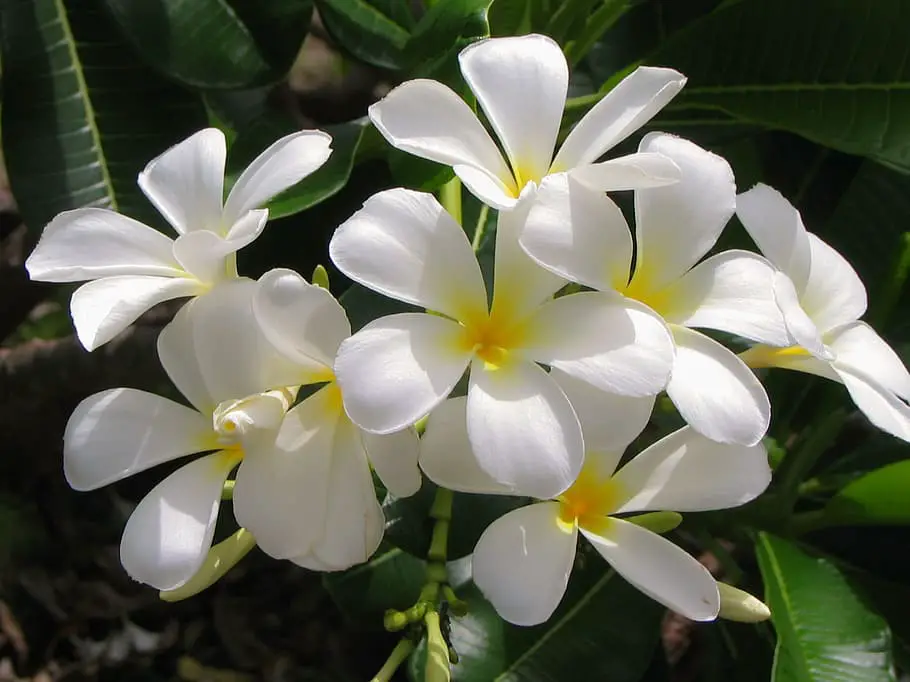
- Scientific name: Jasminum
- Common names: Jasmine, jessamine
- Family: Oleaceae
- Genus: Jasminum
- Origin: Asia, Africa, Australia
- Height: 3-15 feet (1-5 m)
- Spread: 3-6 feet (1-2 m)
- Bloom time: Summer to fall
- Flower color: White, yellow, pink, or purple
- Flower scent: Strong, sweet
- Leaves: Simple, 1-3 inches (2.5-7.5 cm) long
- Hardiness zone: 8-11
- Soil: Well-drained, fertile soil
- Sun exposure: Full sun to partial shade
- Water needs: Moderate
- Propagation: By stem cuttings, air layering, or seed
- Toxicity: The leaves and bark of jasmines are poisonous if ingested.
- Uses: Ornamental shrub, cut flower, essential oil
- Symbolism: Love, happiness, purity
- History: Jasmines have been cultivated for centuries and are native to Asia, Africa, and Australia.
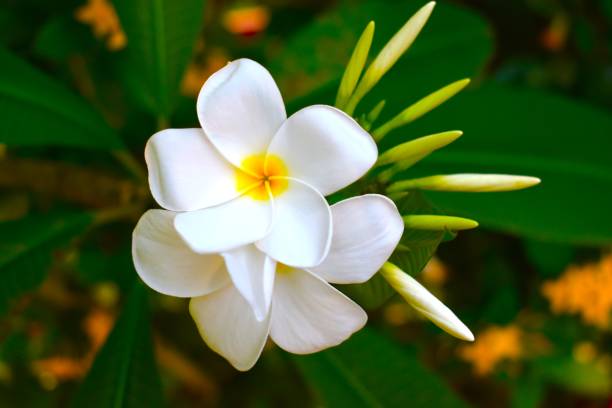
History of Jasmine
Jasmine has been cultivated for centuries and is native to Asia, Africa, and Australia. The first recorded mention of jasmine dates back to 2000 BC, in ancient Egyptian texts. Jasmine was introduced to Europe in the 16th century, and it quickly became popular in gardens and perfumes.
National flower
The jasmine is the national flower of Pakistan and the Philippines. It is also the official flower of the city of Damascus, Syria. The jasmine is a popular symbol of love, happiness, and purity in many cultures.
Cultural significance
The jasmine has a different cultural significance in different countries. In Pakistan, the jasmine is a symbol of motherhood and signifies love and respect. In the Philippines, jasmine is found at weddings, particularly on the island of Java.
Symbolism
The jasmine has a variety of symbolic meanings. It is often associated with love, happiness, purity, modesty, hospitality, community, inspiration, and spiritual ascension. White jasmine blossoms in particular hold the symbolic meaning of purity and innocence, as well as honor and respect.
Uses
Jasmine is used for a variety of purposes. It is a popular ornamental shrub, and it is also used as cut flowers. Jasmine can also be made into essential oils, and it has been used in traditional medicine for centuries. Jasmine is also used in perfumes and other cosmetics.
Additional information
Here are some additional facts about jasmine:
- There are over 200 species of jasmine.
- Jasmine is a popular ingredient in perfumes and essential oils.
- Jasmine is a symbol of love, happiness, and purity in many cultures.
- Jasmine is a relatively easy plant to grow, but it does best in warm climates.
- The jasmine plant is known for its sweet fragrance, which is often described as “heady” or “intoxicating.”
- Jasmine flowers are often used in garlands and wreaths, and they are also popular in religious ceremonies.
- Jasmine tea is a popular beverage in many countries, and it is said to have calming and relaxing properties.
Cast Iron Plant – A Resilient Beauty
5. Freesia (Fresia, freesia flower)

- Scientific name: Freesia refracta
- Common names: Freesia, fresia, freesia flower
- Family: Iridaceae
- Genus: Freesia
- Origin: South Africa
- Height: 1-2 feet (30-60 cm)
- Spread: 6-8 inches (15-20 cm)
- Bloom time: Spring to summer
- Flower color: White, yellow, orange, pink, red, purple
- Flower scent: Strong, sweet
- Leaves: Grass-like, 6-12 inches (15-30 cm) long
- Hardiness zone: 8-10
- Soil: Well-drained, sandy soil
- Sun exposure: Full sun to partial shade
- Water needs: Moderate
- Propagation: By dividing the corms or by seed
- Toxicity: The corms of freesias are poisonous if ingested.
- Uses: Cut flower, potted plant, garden plant
- Symbolism: Love, happiness, purity
- History: Freesias were first introduced to Europe in the 19th century.
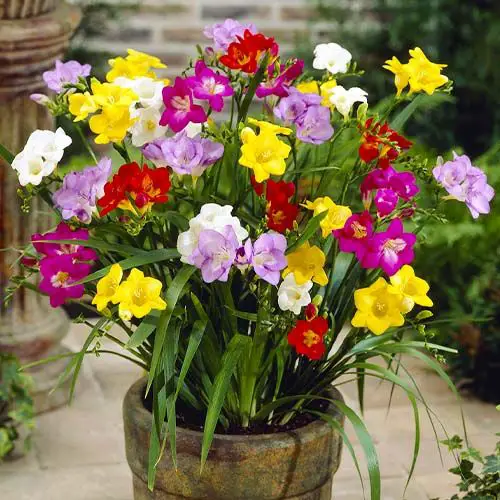
History of Freesia
Freesias are native to South Africa, and they were first introduced to Europe in the 19th century. They quickly became popular as cut flowers, and they are now grown all over the world.
National flower
Freesias are not the national flower of any country. However, they are the official flower of the city of Haarlem, Netherlands.
Cultural significance
Freesias have a different cultural significance in different countries. In the Netherlands, freesias are a symbol of spring and new beginnings. In Germany, freesias are a symbol of friendship. In South Africa, freesias are a symbol of love.
Symbolism
Freesias are often associated with love, happiness, purity, and friendship. The color of the freesia can also affect its symbolism. For example, white freesias are often associated with purity and innocence, while yellow freesias are associated with happiness.
Uses
Freesias are used for a variety of purposes. They are a popular cut flower, and they are also used in arrangements and bouquets. Freesias can also be grown indoors or outdoors, and they are a popular potted plant. Freesias are known for their sweet fragrance, and they come in a variety of colors.
Additional information
Here are some additional facts about freesias:
- There are over 20 species of freesias.
- The freesia flower is shaped like a funnel, and it has six petals.
- Freesias are a member of the iris family.
- Freesias are a relatively easy plant to grow, but they do best in warm climates.
- Freesias can be forced to bloom indoors during the winter.
15 Low-Light Plants Safe For Cats
6. Viburnum (snowball bush, guelder rose)
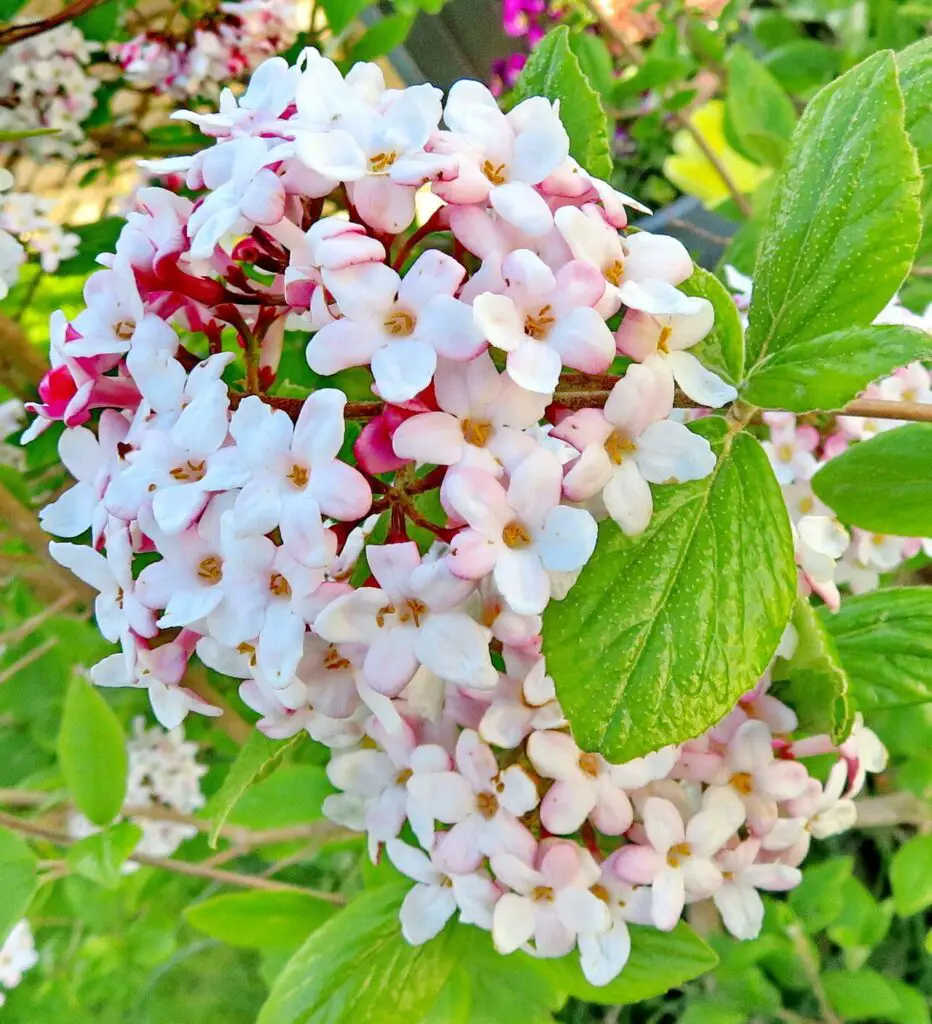
- Scientific name: Viburnum
- Common names: Viburnum, snowball bush, guelder rose
- Family: Caprifoliaceae
- Genus: Viburnum
- Origin: North America, Europe, Asia
- Height: 2-30 feet (0.6-9 m)
- Spread: 3-12 feet (1-3.6 m)
- Bloom time: Spring to summer
- Flower color: White, pink, red, purple, or blue
- Flower scent: Strong, sweet
- Leaves: Simple, 2-4 inches (5-10 cm) long
- Hardiness zone: 3-9
- Soil: Well-drained, fertile soil
- Sun exposure: Full sun to partial shade
- Water needs: Moderate
- Propagation: By division, by seed, or by layering
- Toxicity: The leaves and berries of some viburnums are poisonous if ingested.
- Uses: Ornamental shrub, hedge, cut flower
- Symbolism: Love, happiness, purity
- History: Viburnums have been cultivated for centuries and are native to North America, Europe, and Asia.
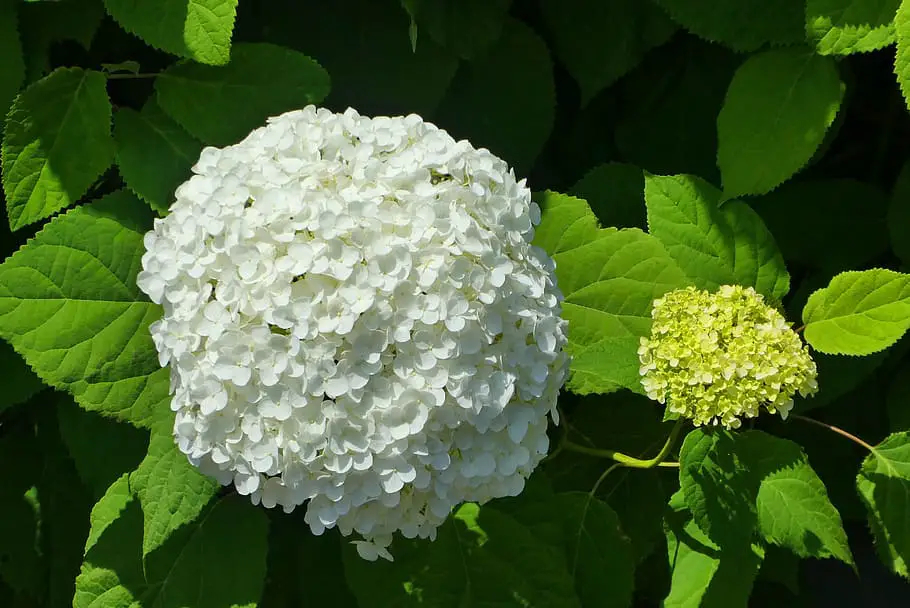
History of Viburnum
Viburnums have been cultivated for centuries and are native to North America, Europe, and Asia. The first recorded mention of viburnums dates back to the 1st century AD, in the writings of the Roman naturalist Pliny the Elder. Viburnums were introduced to North America by European settlers in the 17th century, and they quickly became popular garden shrubs.
National flower
Viburnums are not the national flower of any country. However, they are the official flower of the city of Haarlem, Netherlands.
Cultural significance
Viburnums have a different cultural significance in different countries. In Ukraine, viburnum (called “kalina”) is a national symbol, and it is often used in folk songs and embroidery. In Russia, viburnum is a symbol of spring and new beginnings. In China, viburnum is a symbol of longevity and good luck.
Symbolism
Viburnums are often associated with love, happiness, purity, and protection. The color of the viburnum can also affect its symbolism. For example, white viburnums are often associated with purity and innocence, while pink viburnums are associated with love.
Uses
Viburnums are used for a variety of purposes. They are a popular ornamental shrub, and they are also used as hedges and cut flowers. Viburnums can also be used in traditional medicine, and the berries of some viburnums are edible.
Additional information
Here are some additional facts about viburnums:
- There are over 150 species of viburnums.
- Viburnums are a member of the honeysuckle family.
- Viburnums are a relatively easy plant to grow, but they do best in cool climates.
- Viburnums are often used in landscaping, and they can be a great addition to any garden.
Fragrant Plants
7. Honeysuckle (woodbine, sweet briar)

- Scientific name: Lonicera
- Common names: Honeysuckle, woodbine, sweet briar
- Family: Caprifoliaceae
- Genus: Lonicera
- Origin: Europe, Asia, North America
- Height: 2-20 feet (0.6-6 m)
- Spread: 3-10 feet (1-3 m)
- Bloom time: Spring to summer
- Flower color: White, yellow, pink, red, orange, or purple
- Flower scent: Strong, sweet
- Leaves: Simple, 1-4 inches (2.5-10 cm) long
- Hardiness zone: 3-9
- Soil: Well-drained, fertile soil
- Sun exposure: Full sun to partial shade
- Water needs: Moderate
- Propagation: By division, by seed, or by layering
- Toxicity: The leaves and berries of some honeysuckles are poisonous if ingested.
- Uses: Ornamental vine, hedge, cut flower
- Symbolism: Love, happiness, fidelity
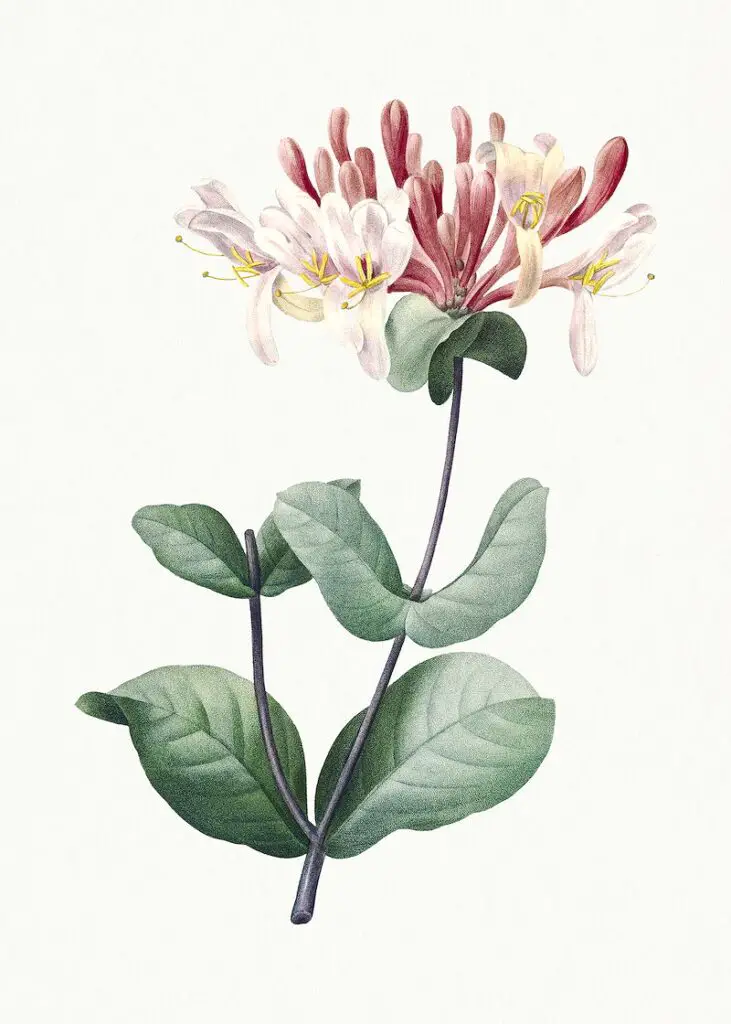
History of Honeysuckle
Honeysuckles have been cultivated for centuries and are native to Europe, Asia, and North America. The first recorded mention of honeysuckles dates back to the 4th century BC, in the writings of the Greek physician Hippocrates. Honeysuckles were introduced to North America by European settlers in the 17th century, and they quickly became popular garden plants.
National flower
Honeysuckle is the national flower of South Korea. It is also the official flower of the city of Paris, France.
Cultural significance
Honeysuckles have a different cultural significance in different countries. In South Korea, honeysuckle is a symbol of love and fidelity. In France, honeysuckle is a symbol of spring and new beginnings. In Japan, honeysuckle is a symbol of purity and innocence.
Symbolism
Honeysuckles are often associated with love, happiness, fidelity, and nostalgia. The color of the honeysuckle can also affect its symbolism. For example, white honeysuckles are often associated with purity and innocence, while pink honeysuckles are associated with love.
Uses
Honeysuckles are used for a variety of purposes. They are a popular ornamental vine, and they are often used in landscaping. They are also a popular cut flower, and they can be used in arrangements and bouquets. Honeysuckles are known for their sweet fragrance, and they come in a variety of colors.
Additional information
Here are some additional facts about honeysuckles:
- There are over 200 species of honeysuckles.
- The honeysuckle flower is shaped like a trumpet, and it has five petals.
- Honeysuckles are a member of the honeysuckle family.
- Honeysuckles are a relatively easy plant to grow, but they do best in cool climates.
- Honeysuckles can be invasive in some areas, so it is important to choose a species that is appropriate for your climate.
8. Tuberose (Polianthes, Tuberose Lily)

- Scientific name: Polianthes tuberosa
- Common names: Tuberose, Polianthes, Tuberose Lily
- Family: Amaryllidaceae
- Genus: Polianthes
- Origin: Mexico
- Height: 1-3 feet (0.3-1 m)
- Spread: 1-2 feet (0.3-0.6 m)
- Bloom time: Summer
- Flower color: White, yellow, pink, or purple
- Flower scent: Strong, sweet
- Leaves: Narrow, 6-12 inches (15-30 cm) long
- Hardiness zone: 8-11
- Soil: Well-drained, fertile soil
- Sun exposure: Full sun to partial shade
- Water needs: Moderate
- Propagation: By division, by seed, or by bulbils
- Toxicity: The tuberose bulb is poisonous if ingested.
- Uses: Cut flower, potted plant, essential oil
- Symbolism: Love, passion, sensuality
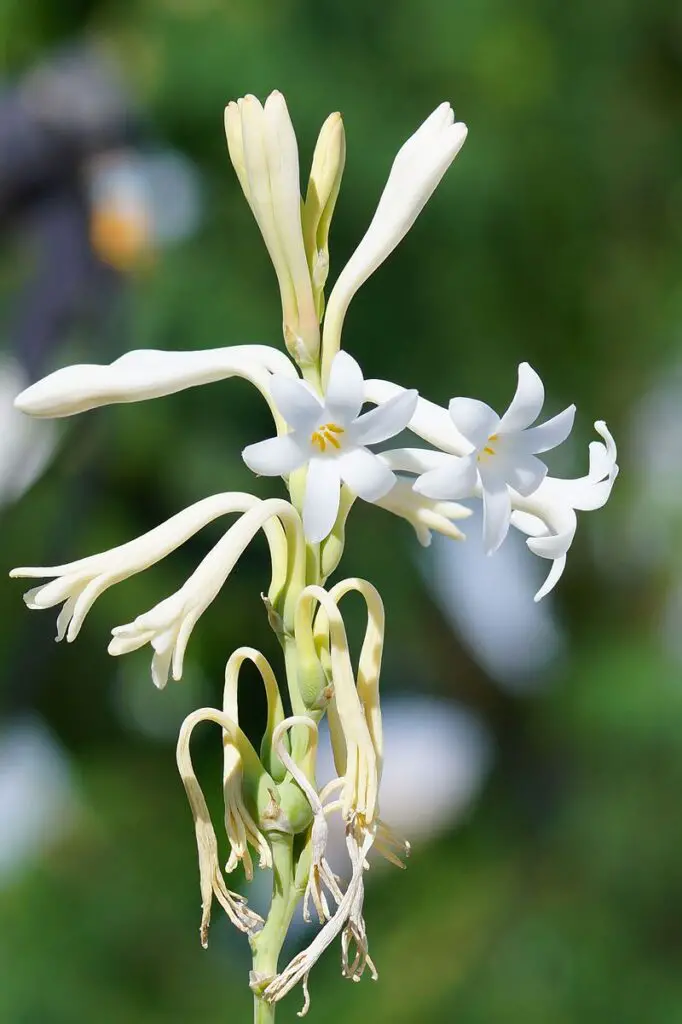
History of Tuberose
Tuberoses have been cultivated for centuries and are native to Mexico. The first recorded mention of tuberose dates back to the 15th century, in the writings of the Spanish conquistador Hernán Cortés. Tuberoses were introduced to Europe in the 16th century, and they quickly became popular garden flowers.
National flower
Tuberose is not the national flower of any country.
Cultural significance
Tuberoses have a different cultural significance in different countries. In India, tuberose is a symbol of love and passion. In Mexico, tuberose is a symbol of fertility and abundance. In Egypt, tuberose is a symbol of purity and innocence.
Symbolism
Tuberoses are often associated with love, passion, sensuality, and rebirth. The strong, sweet scent of tuberose is said to be intoxicating, and it has been used for centuries as an aphrodisiac.
Uses
Tuberoses are used for a variety of purposes. They are a popular cut flower, and they can be used in arrangements and bouquets. Tuberoses are also used in perfumes and essential oils. The tuberose bulb can also be eaten, and it has a mild, sweet flavor.
Additional information
Here are some additional facts about tuberose:
- There are over 20 species of tuberose.
- The tuberose flower is shaped like a trumpet, and it has six petals.
- Tuberoses are a member of the amaryllis family.
- Tuberoses are a relatively easy plant to grow, but they do best in warm climates.
- Tuberoses are often used in perfumes and essential oils.
9. Lavender, (English lavender, true lavender)

- Scientific name: Lavandula angustifolia
- Common names: Lavender, English lavender, true lavender
- Family: Lamiaceae
- Genus: Lavandula
- Origin: Mediterranean region
- Perennial plant
- Grows to be about 2 feet (60 cm) tall
- Gray-green leaves that are narrow and pointed
- Small, purple, blue, or white flowers
- Blooms in the summer
- Flowers are a source of essential oil
- Used in perfumes, cosmetics, and aromatherapy
- Also used in cooking, as a food flavoring, and as a medicinal herb
- Has a calming and relaxing effect
- Often used to treat anxiety, insomnia, and stress
- Also a natural insect repellent
- Popular ornamental plant
- Often used in gardens, flower arrangements, and potpourris
- Easy to grow
- Requires well-drained soil and full sun
History of Lavender
Lavender has been used for centuries for its medicinal and aromatic properties. It was first cultivated in the Mediterranean region, and it is now grown in many parts of the world. The ancient Greeks and Romans used lavender for bathing, cooking, and perfumery. Lavender was also used in religious ceremonies and for embalming.
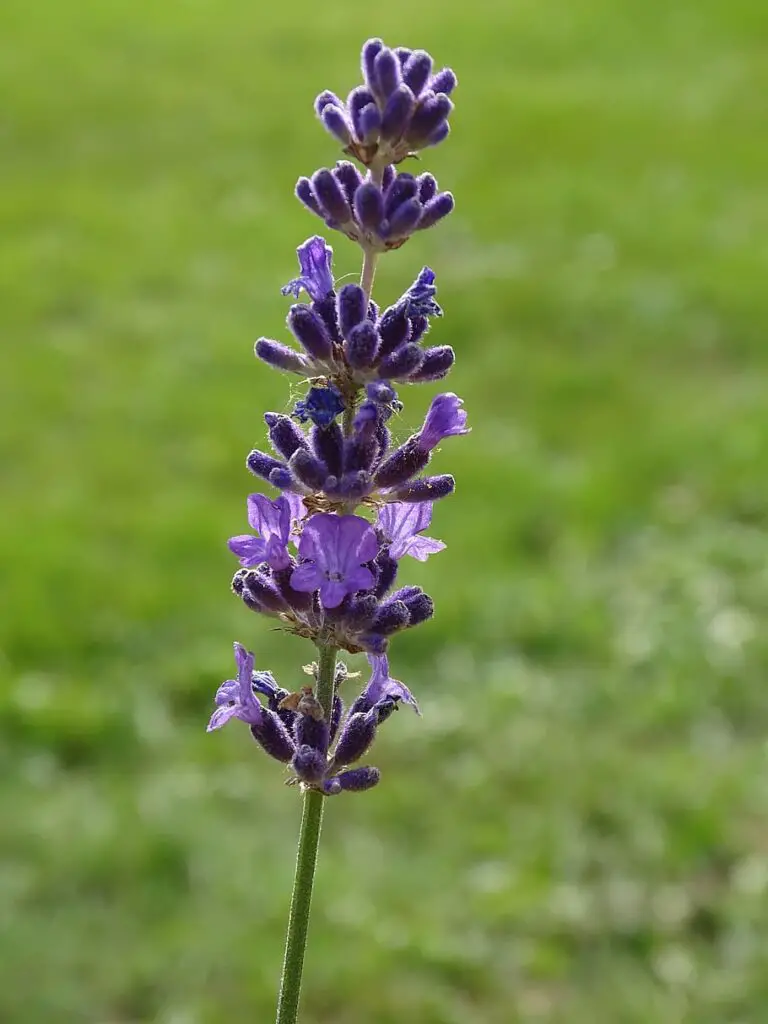
National Flower
Lavender is not the national flower of any country. However, it is the official flower of the French department of Haute-Provence.
Status in culture
Lavender is a popular symbol of love, peace, and tranquility. It is often used in perfumes, cosmetics, and aromatherapy. Lavender is also a popular ornamental plant, and it is often used in gardens, flower arrangements, and potpourris
Uses
Lavender is used in a variety of ways, including:
- Medicinal: Lavender is used to treat a variety of conditions, including anxiety, insomnia, and stress. It is also used to relieve pain, inflammation, and headaches.
- Aromatherapy: Lavender essential oil is used in aromatherapy to promote relaxation, reduce stress, and improve sleep.
- Cooking: Lavender flowers can be used to flavor food, such as lavender honey, lavender shortbread, and lavender ice cream.
- Perfume: Lavender is a popular ingredient in perfumes, colognes, and other scented products.
- Ornamental: Lavender is a popular ornamental plant, and it is often used in gardens, flower arrangements, and potpourris.
10. Southern magnolia,(bull bay, evergreen magnolia)

- Scientific name: Magnolia grandiflora
- Common names: Southern magnolia, bull bay, evergreen magnolia
- Family: Magnoliaceae
- Genus: Magnolia
- Origin: Southeastern United States
- Perennial tree
- Grows to be about 60-80 feet (20-25 m) tall
- Large, leathery leaves
- Fragrant, white flowers
- Blooms in the spring and summer
- Flowers are a source of nectar for bees and butterflies
- Wood is strong and durable
- Used in construction, furniture, and veneer
- Southern magnolia is a popular ornamental tree
- Often planted in gardens, parks, and along streets
- Southern magnolia is a slow-growing tree
- Can live for hundreds of years
- Tolerates a variety of soil types
- Prefers full sun to partial shade
- Drought-tolerant once established

History
The Southern magnolia is native to the southeastern United States, and it has been used by Native Americans for centuries. The tree was first introduced to Europe in the 17th century, and it quickly became popular as an ornamental plant.
National flower
The Southern magnolia is the state flower of Mississippi. It was adopted as the state flower in 1917.
Status in culture
The Southern magnolia is a symbol of beauty, elegance, and Southern pride. It is often used in wedding bouquets and other floral arrangements. The tree is also a popular subject of paintings and photographs.
Flower symbolism
The flowers of the Southern magnolia are often considered to be a symbol of love, purity, and grace. They are also associated with the South and Southern culture.
Uses
The Southern magnolia is used in a variety of ways, including:
- Ornamental: The Southern magnolia is a popular ornamental tree, and it is often planted in gardens, parks, and along streets.
- Construction: The wood of the Southern magnolia is strong and durable, and it is used in a variety of applications, including construction, furniture, and veneer.
- Medicine: The bark of the Southern magnolia has been used to treat a variety of ailments, including diarrhea, dysentery, and fever.
- Food: The flowers of the Southern magnolia can be used to make tea, and the seeds can be roasted and eaten.
11. Heliotropium arborescens (Sweet heliotrope, cherry pie, candy flower, turnsole)

- Scientific name: Heliotropium arborescens
- Common names: Sweet heliotrope, cherry pie, candy flower, turnsole
- Family: Boraginaceae
- Origin: South America
- Height: 2-4 feet
- Bloom time: Summer to fall
- Flowers: Small, fragrant, lavender-blue
- Leaves: Dark green, oval
- Soil: Well-drained, loamy soil
- Sun exposure: Full sun
- Watering: Water regularly, especially during hot, dry weather
- Fertilizer: Fertilize monthly with a balanced fertilizer
- Pests and diseases: Susceptible to powdery mildew, aphids, and spider mites
- Propagation: Sow seeds indoors in early spring or take cuttings in summer
- Hardiness zone: 9-11
- Significance: Symbolizes prophetic dreams, healing, and wealth
- Uses: Ornamental plant, used in perfumes and potpourris
- Toxicity: All parts of the plant are poisonous if ingested

History of Heliotropium arborescens
Heliotropium arborescens is native to South America, but it has been cultivated in other parts of the world for centuries. It was introduced to Europe in the 16th century, and it quickly became a popular ornamental plant. The plant was also used medicinally in traditional medicine, and it was believed to have a number of healing properties.
National flower
Heliotropium arborescens is not the national flower of any country. However, it is the state flower of Mississippi.
Cultural status
Heliotropium arborescens has a long history of use in different cultures. In ancient Egypt, the plant was associated with the goddess Hathor, and it was believed to have magical powers. In European cultures, the plant was often used in love potions, and it was believed to attract the opposite sex.
Symbolism
The heliotrope flower is often associated with love, fidelity, and endless love. It is also said to symbolize prophetic dreams, healing, and wealth.
Uses
Heliotropium arborescens is primarily used as an ornamental plant. It is also used in perfumes and potpourris, and it has some medicinal properties. The plant’s leaves can be used to make a tea that is said to relieve headaches and stomachache.
Here are some additional facts about Heliotropium arborescens:
- The name “heliotrope” comes from the Greek words “helios” meaning “sun” and “trope” meaning “turn,” referring to the way the flowers follow the sun.
- The sweet scent of the flowers is said to be reminiscent of chocolate, vanilla, or cherry pie.
- Heliotrope is a popular ingredient in perfumes and potpourris.
- The plant is poisonous if ingested, so it is important to keep it out of reach of children and pets.
12. Phlox (garden phlox, moss phlox, creeping phlox)
- Scientific name: Phlox
- Common names: Phlox, garden phlox, moss phlox, creeping phlox
- Family: Polemoniaceae
- Origin: North America, Europe, Asia
- Height: 6 inches to 6 feet
- Bloom time: Summer to fall
- Flowers: Small to large, tubular, fragrant, in a variety of colors
- Leaves: Oval to lanceolate, opposite
- Soil: Well-drained, loamy soil
- Sun exposure: Full sun to partial shade
- Watering: Water regularly, especially during hot, dry weather
- Fertilizer: Fertilize monthly with a balanced fertilizer
- Pests and diseases: Susceptible to powdery mildew, aphids, and spider mites
- Propagation: Sow seeds indoors in early spring or take cuttings in summer
- Hardiness zone: 3-8
- Significance: Symbolizes love, fidelity, and remembrance
- Uses: Ornamental plant, cut flower, dried flower
- Toxicity: None
History of Phlox
Phlox is a genus of flowering plants that is native to North America, Europe, and Asia. The first phlox species were described in the 16th century, and the genus quickly became popular among European gardeners. Phlox were introduced to North America in the 17th century, and they have been grown in gardens there ever since.
- National flower: Phlox is not the national flower of any country. However, it is the state flower of Indiana.
- Cultural status: Phlox have a long history of use in different cultures. In Native American cultures, phlox were used for medicinal purposes, and they were also considered to be sacred plants. In European cultures, phlox were often associated with love and fidelity, and they were sometimes used in wedding bouquets.
- Symbolism: The phlox flower is often associated with love, fidelity, and remembrance. It is also said to symbolize hope, joy, and peace.
- Uses: Phlox are primarily used as ornamental plants. They are also used as cut flowers and dried flowers. Phlox are also used in some traditional medicines.
Here are some additional facts about Phlox:
- The name “phlox” comes from the Greek word “phlox,” meaning “flame.”
- Phlox is a member of the Polemoniaceae family, which also includes columbine, candytuft, and larkspur.
- There are over 100 species of phlox, and they come in a wide variety of colors, including white, pink, red, purple, blue, and yellow.
- Phlox are popular garden flowers, and they are also used as cut flowers and dried flowers.
- Phlox are native to North America, Europe, and Asia, and they are now grown in gardens all over the world.
- Phlox are deer-resistant, so they are a good choice for gardens that are frequented by deer.
- Phlox are relatively easy to care for, and they are a good choice for beginner gardeners.
13. Lily of the valley (May bells, Our Lady’s tears, Mary’s tears)
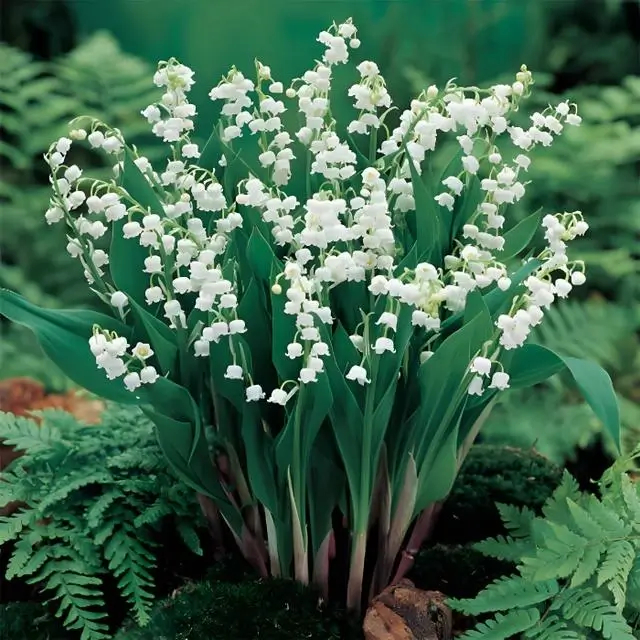
- Scientific name: Convallaria majalis
- Common names: Lily of the valley, May bells, Our Lady’s tears, Mary’s tears
- Family: Asparagaceae
- Origin: Europe, Asia
- Height: 6-12 inches
- Bloom time: Spring
- Flowers: White, bell-shaped, fragrant
- Leaves: Dark green, lanceolate
- Soil: Well-drained, loamy soil
- Sun exposure: Partial shade
- Watering: Water regularly, especially during hot, dry weather
- Fertilizer: Fertilize lightly in spring
- Pests and diseases: Susceptible to aphids, slugs, and snails
- Propagation: Divide clumps in spring or fall
- Hardiness zone: 2-8
- Significance: Symbolizes purity, love, and spring
- Uses: Ornamental plant, cut flower, wedding bouquet
- Toxicity: All parts of the plant are poisonous if ingested

History of Lily of the valley
Lily of the valley has been used for centuries for its beauty, fragrance, and medicinal properties. It was first mentioned in writing by the Greek physician Dioscorides in the 1st century AD. Lily of the valley was also used by the Romans, who believed it had magical powers. In the Middle Ages, Lily of the valley was associated with the Virgin Mary, and it became a popular symbol of purity and innocence.
- National flower: Lily of the valley is not the national flower of any country. However, it is the floral emblem of Finland.
- Cultural status: Lily of the valley has a long and rich history in many cultures. In Europe, it is often associated with spring, love, and fidelity. In France, Lily of the valley is given as a gift on May Day, which is a traditional holiday celebrating the arrival of spring. In Japan, Lily of the valley is a symbol of good luck and prosperity.
- Symbolism: Lily of the valley is often associated with purity, love, and spring. It is also said to symbolize humility, sweetness, and returning happiness. In some cultures, Lily of the valley is also associated with death and mourning.
- Uses: Lily of the valley is primarily used as an ornamental plant. It is also used in perfumes and potpourris. Lily of the valley has also been used in traditional medicine for centuries, but it is important to note that the plant is poisonous and should not be ingested.
Here are some additional facts about Lily of the Valley:
- The name “lily of the valley” comes from the Latin words “convallaria” meaning “valley lily” and “majalis” meaning “of May.”
- Lily of the valley is a member of the Asparagaceae family, which also includes asparagus, onions, and garlic.
- Lily of the valley is a small, herbaceous perennial plant.
- Lily of the valley flowers bloom in spring, and they have a sweet, delicate fragrance.
- Lily of the valley is a popular ornamental plant, and it is often used in gardens and bouquets.
- Lily of the valley is also a poisonous plant, so it is important to keep it out of reach of children and pets.
14. Stargazer lily (Oriental lily)

- Scientific name: Lilium orientalis ‘Stargazer’ Lilium orientalis ‘Stargazer’ plant
- Common names: Stargazer lily, Oriental lily
- Family: Liliaceae
- Origin: Asia
- Height: 3-4 feet
- Bloom time: Mid- to late summer Stargazer lily flower
- Flowers: Large, fragrant, crimson-pink with white edges and dark spots
- Leaves: Long, narrow, green
- Soil: Well-drained, loamy soil
- Sun exposure: Full sun
- Watering: Water regularly, especially during hot, dry weather
- Fertilizer: Fertilize monthly with a balanced fertilizer
- Pests and diseases: Susceptible to lily beetle, aphids, and slugs
- Propagation: Divide clumps in spring or fall
- Hardiness zone: 4-9
- Significance: Symbolizes love, passion, and strength
- Uses: Ornamental plant, cut flower, wedding bouquet
- Toxicity: All parts of the plant are poisonous if ingested

History of Stargazer lily
Stargazer lilies were first bred in the Netherlands in the early 1900s. They quickly became popular in Europe and North America, and they are now one of the most popular types of lilies in the world.
- National flower: Stargazer lilies are not the national flower of any country.
- Cultural status: Stargazer lilies have a long and rich history in many cultures. In Europe, they are often associated with love, passion, and strength. In China, they are a symbol of prosperity and good luck. In Japan, they are a symbol of purity and innocence.
- Symbolism: Stargazer lilies are often associated with love, passion, strength, prosperity, good luck, purity, and innocence. They are also said to symbolize ambition, prosperity, and success.
- Uses: Stargazer lilies are primarily used as ornamental plants. They are also used as cut flowers and wedding bouquets. Stargazer lilies are relatively easy to care for, and they are a popular choice for gardens in full sun.
Here are some additional facts about Stargazer lilies:
- The name “Stargazer” comes from the way the flowers point upwards, as if they are gazing at the stars.
- Stargazer lilies are one of the most popular types of Oriental lilies.
- They are known for their large, fragrant flowers and their long vase life.
- Stargazer lilies are a good choice for gardens in full sun.
- They are also a popular choice for cut flowers.
- Stargazer lilies are relatively easy to care for.
15. Malus Baccata (European crab apple, rowan tree, mountain ash)
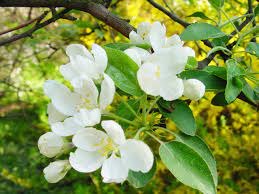
- Scientific name: Malus baccata Malus baccata plant
- Common names: European crab apple, rowan tree, mountain ash
- Family: Rosaceae
- Origin: Europe, Asia
- Height: 20-30 feet
- Bloom time: Late spring to early summer European crab apple flower
- Flowers: White, pink, or red, in clusters
- Leaves: Dark green, oval
- Soil: Well-drained, loamy soil
- Sun exposure: Full sun
- Watering: Water regularly, especially during hot, dry weather
- Fertilizer: Fertilize once a year in spring
- Pests and diseases: Susceptible to apple scab, fire blight, and aphids
- Propagation: Seed, grafting, or air layering
- Hardiness zone: 4-8
- Significance: Symbolizes love, protection, and good luck
- Uses: Ornamental plant, fruit tree, hedge
- Toxicity: None

History of Malus Baccata
Malus baccata has been used for centuries for its fruit, wood, and medicinal properties. It was first mentioned in writing by the Greek physician Dioscorides in the 1st century AD. Malus baccata was also used by the Romans, who believed it had magical powers. In the Middle Ages, Malus baccata was associated with the Virgin Mary, and it became a popular symbol of love and protection.
- National flower: Malus baccata is not the national flower of any country.
- Cultural status: Malus baccata has a long and rich history in many cultures. In Europe, it is often associated with love, protection, and good luck. In Celtic cultures, it is a symbol of the triple goddess. In Norse mythology, it is the tree of life.
- Symbolism: Malus baccata is often associated with love, protection, good luck, fertility, and the triple goddess. It is also said to symbolize hope, new beginnings, and strength.
- Uses: Malus baccata is primarily used as an ornamental tree. It is also used as a fruit tree, and the berries can be used to make jellies, jams, and pies. Malus baccata wood is hard and strong, and it is used to make furniture, tools, and musical instruments.
Here are some additional facts about Malus baccata :
- The name “Malus baccata” comes from the Latin words “malus” meaning “apple” and “baccatus” meaning “berry-bearing.”
- Malus baccata is a member of the Rosaceae family, which also includes apples, pears, and cherries.
- Malus baccata is a deciduous tree that can grow up to 30 feet tall.
- Malus baccata flowers in late spring to early summer, and the flowers are white, pink, or red.
- Malus baccata fruits are small, red or orange berries that ripen in late summer.
- Malus baccata is a popular ornamental tree, and it is also used as a fruit tree.
- Malus baccata is a relatively easy tree to care for, and it is a good choice for gardens in Zones 4-8.
16. Arabian jasmine, (sambac jasmine, evening jasmine)
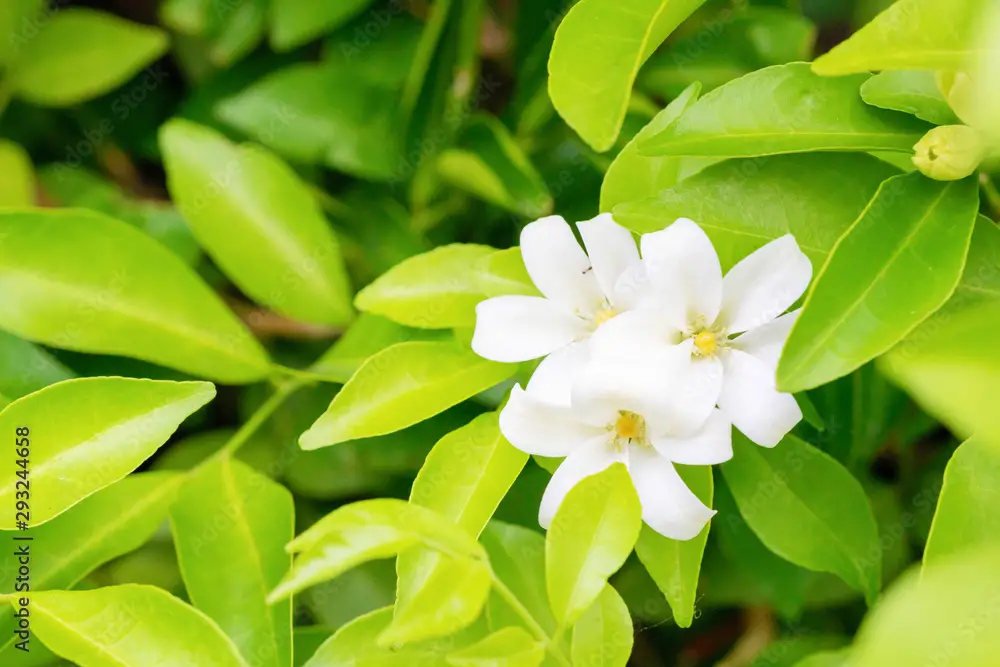
- Scientific name: Jasminum sambac
- Common names: Arabian jasmine, sambac jasmine, star jasmine, evening jasmine
- Family: Oleaceae
- Origin: India, Southeast Asia
- Height: 6-10 feet
- Bloom time: Summer to fall
- Flowers: White, star-shaped, fragrant
- Leaves: Dark green, oval
- Soil: Well-drained, loamy soil
- Sun exposure: Full sun to partial shade
- Watering: Water regularly, especially during hot, dry weather
- Fertilizer: Fertilize monthly with a balanced fertilizer
- Pests and diseases: Susceptible to mealybugs, aphids, and whiteflies
- Propagation: Cuttings, air layering
- Hardiness zone: 10-11
- Significance: Symbolizes love, purity, and fidelity
- Uses: Ornamental plant, cut flower, garlands
- Toxicity: None
History of Arabian jasmine
Arabian jasmine has been used for centuries for its fragrance and medicinal properties. It was first mentioned in writing by the Greek physician Dioscorides in the 1st century AD. Arabian jasmine was also used by the Arabs, who believed it had magical powers. In the Middle Ages, Arabian jasmine was associated with the Virgin Mary, and it became a popular symbol of love and purity.
- National flower: Arabian jasmine is not the national flower of any country. However, it is the state flower of the Philippines.
- Cultural status: Arabian jasmine has a long and rich history in many cultures. In India, it is a symbol of love, purity, and fidelity. In the Middle East, it is a symbol of hospitality and welcome. In Indonesia, it is a symbol of peace and tranquility.
- Symbolism: Arabian jasmine is often associated with love, purity, fidelity, hospitality, welcome, peace, and tranquility. It is also said to symbolize happiness, joy, and new beginnings.
- Uses: Arabian jasmine is primarily used as an ornamental plant. It is also used to make garlands, perfumes, and potpourris. Arabian jasmine essential oil is used in aromatherapy for its relaxing and calming properties.
- Toxicity: Arabian jasmine is not toxic to humans or animals. However, the leaves and flowers can cause skin irritation in some people.
Here are some additional facts about Arabian jasmine:
- The name “Arabian jasmine” comes from the Arabic word “sambac” meaning “jasmine.”
- Arabian jasmine is a member of the Oleaceae family, which also includes olive trees, privets, and lilacs.
- Arabian jasmine is a climbing vine that can grow up to 10 feet long.
- Arabian jasmine flowers in summer to fall, and the flowers are white, star-shaped, and fragrant.
- Arabian jasmine is a popular ornamental plant, and it is also used to make garlands and other decorations.
- Arabian jasmine is relatively easy to care for, and it is a good choice for gardens in Zones 10-11.
17. Frangipani, (temple tree, plumeria, puakenikeni)
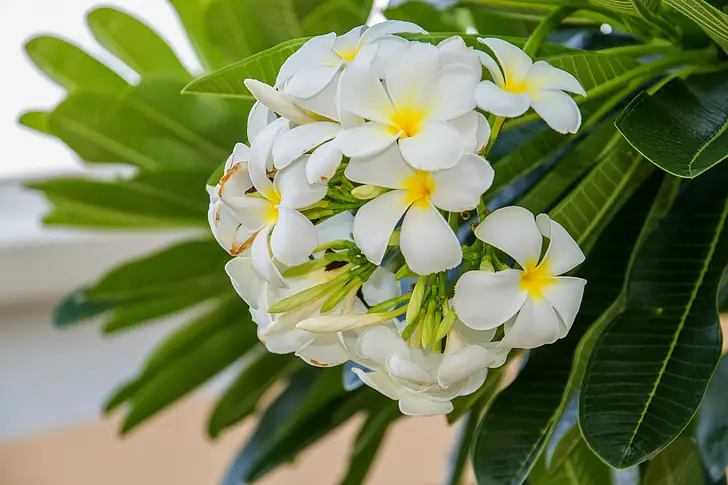
- Scientific name: Plumeria
- Common names: Frangipani, temple tree, plumeria, puakenikeni
- Family: Apocynaceae
- Origin: Mexico, Central America, South America
- Height: 10-30 feet
- Bloom time: Summer to fall
- Flowers: White, yellow, pink, orange, red, purple, or bicolor, fragrant
- Leaves: Dark green, oval
- Soil: Well-drained, loamy soil
- Sun exposure: Full sun
- Watering: Water regularly, especially during hot, dry weather
- Fertilizer: Fertilize monthly with a balanced fertilizer
- Pests and diseases: Susceptible to mealybugs, scale, and aphids
- Propagation: Cuttings, air layering
- Hardiness zone: 9-11
- Significance: Symbolizes love, beauty, and romance
- Uses: Ornamental plant, cut flower, essential oil
- Toxicity: All parts of the plant are poisonous if ingested

History of Frangipani
Frangipani has been used for centuries for its fragrance and medicinal properties. It was first mentioned in writing by the Spanish explorer Hernán Cortés in the 16th century. Frangipani was introduced to Europe in the 17th century, and it quickly became a popular ornamental plant.
- National flower: Frangipani is not the national flower of any country. However, it is the state flower of Hawaii.
- Cultural status: Frangipani has a long and rich history in many cultures. In Mexico, it is a symbol of love and beauty. In Hawaii, it is a symbol of peace and tranquility. In Thailand, it is a symbol of royalty.
- Symbolism: Frangipani is often associated with love, beauty, romance, peace, tranquility, and royalty. It is also said to symbolize new beginnings, hope, and happiness.
- Uses: Frangipani is primarily used as an ornamental plant. It is also used to make cut flowers, essential oil, and perfume. Frangipani essential oil is used in aromatherapy for its relaxing and calming properties.
- Toxicity: All parts of the plant are poisonous if ingested.
Here are some additional facts about Frangipani:
- The name “frangipani” comes from the Italian word “frangipani” meaning “broken bread,” which is said to be a reference to the fragrance of the flowers.
- Frangipani is a member of the Apocynaceae family, which also includes oleanders, milkweed, and dogbane.
- Frangipani is a tropical tree that can grow up to 30 feet tall.
- Frangipani flowers in summer to fall, and the flowers are white, yellow, pink, orange, red, purple, or bicolor, and they are very fragrant.
- Frangipani is a popular ornamental plant, and it is also used to make cut flowers and essential oil.
- Frangipani is relatively easy to care for, and it is a good choice for gardens in Zones 9-11.
18. Daffodil, (narcissus, jonquil, paperwhite)
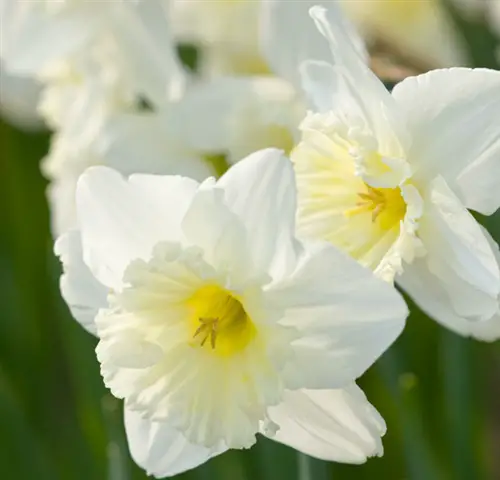
- Scientific name: Narcissus
- Common names: Daffodil, narcissus, jonquil, paperwhite
- Family: Amaryllidaceae
- Origin: Europe, Asia
- Height: 6-18 inches
- Bloom time: Late winter to early spring
- Flowers: Trumpet-shaped, yellow, white, or bicolor
- Leaves: Narrow, grass-like
- Soil: Well-drained, loamy soil
- Sun exposure: Full sun to partial shade
- Watering: Water regularly during the growing season
- Fertilizer: Fertilize once a year in spring
- Pests and diseases: Susceptible to aphids, slugs, and snails
- Propagation: Divide bulbs in fall or spring
- Hardiness zone: 3-8
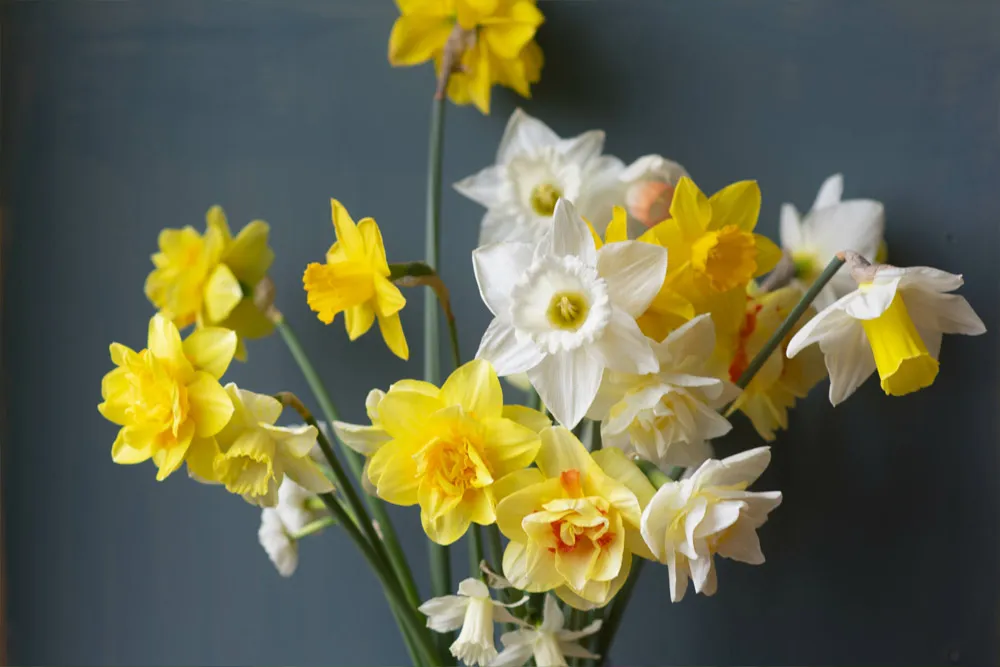
History of Daffodil
Daffodils have been used for centuries for their beauty and medicinal properties. They were first mentioned in writing by the Greek physician Dioscorides in the 1st century AD. Daffodils were also used by the Romans, who believed they had magical powers. In the Middle Ages, daffodils were associated with the Virgin Mary, and they became a popular symbol of rebirth and new beginnings.
- National flower: Daffodils are the national flower of Wales.
- Cultural status: Daffodils have a long and rich history in many cultures. In Wales, they are a symbol of hope and new beginnings. In England, they are associated with spring and Easter. In Italy, they are a symbol of love and fidelity.
- Symbolism: Daffodils are often associated with rebirth, new beginnings, hope, love, fidelity, and spring. They are also said to symbolize happiness, joy, and good luck.
- Uses: Daffodils are primarily used as an ornamental plant. They are also used to make cut flowers, pot plants, and essential oil. Daffodil essential oil is used in aromatherapy for its uplifting and refreshing properties.
- Toxicity: All parts of the plant are poisonous if ingested.
Here are some additional facts about daffodils:
- The name “daffodil” comes from the Greek word “daffos” meaning “saffron.”
- Daffodils are a member of the Amaryllidaceae family, which also includes amaryllis, lilies, and onions.
- Daffodils are a bulb plant, which means they store food in their bulbs during the winter.
- Daffodils come in a variety of colors, including yellow, white, and bicolor.
- Daffodils are a popular ornamental plant, and they are often used in gardens, flower arrangements, and bouquets.
- Daffodils are relatively easy to care for, and they are a good choice for gardens in Zones 3-8.
19. Champak, (champaca flower, golden champak)
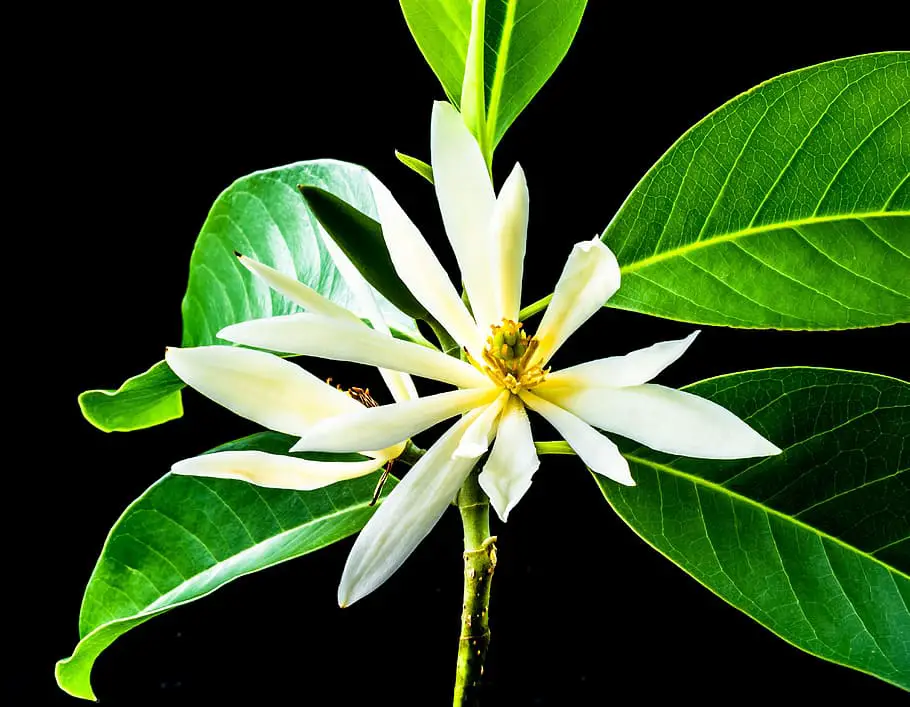
- Scientific name: Magnolia champaca
- Common names: Champak, champaca flower, golden champak
- Family: Magnoliaceae
- Origin: India, Southeast Asia
- Height: 20-40 feet
- Bloom time: Summer to fall
- Flowers: Yellow, fragrant
- Leaves: Dark green, oval
- Soil: Well-drained, loamy soil
- Sun exposure: Full sun to partial shade
- Watering: Water regularly, especially during hot, dry weather
- Fertilizer: Fertilize monthly with a balanced fertilizer
- Pests and diseases: Susceptible to leaf spot, aphids, and scale
- Propagation: Seed, air layering
- Hardiness zone: 10-11
- Significance: Symbolizes love, purity, and fidelity
- Uses: Ornamental plant, cut flower, essential oil
- Toxicity: None
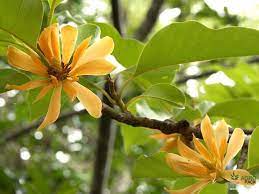
History of Champak
Champak has been used for centuries for its fragrance and medicinal properties. It was first mentioned in writing by the Indian physician Sushruta in the 6th century BC. Champak was also used by the Greeks and Romans, who believed it had magical powers. In the Middle Ages, champak was associated with the Virgin Mary, and it became a popular symbol of love and purity.
- National flower: Champak is not the national flower of any country. However, it is the state flower of Assam, India.
- Cultural status: Champak has a long and rich history in many cultures. In India, it is a symbol of love, purity, and fidelity. In Southeast Asia, it is a symbol of beauty and grace. In China, it is a symbol of good luck and prosperity.
- Symbolism: Champak is often associated with love, purity, fidelity, beauty, grace, good luck, and prosperity. It is also said to symbolize happiness, joy, and new beginnings.
- Uses: Champak is primarily used as an ornamental plant. It is also used to make cut flowers, essential oil, and perfume. Champak essential oil is used in aromatherapy for its relaxing and calming properties.
- Toxicity: Champak is not toxic to humans or animals. However, the leaves and flowers can cause skin irritation in some people.
Here are some additional facts about champak:
- The name “champak” comes from the Sanskrit word “campaka” meaning “fragrant.”
- Champak is a member of the Magnoliaceae family, which also includes magnolias, tulip trees, and bigleaf magnolias.
- Champak is a large, evergreen tree that can grow up to 40 feet tall.
- Champak flowers in summer to fall, and the flowers are yellow, fragrant, and cup-shaped.
- Champak is a popular ornamental plant, and it is also used to make cut flowers and essential oil.
- Champak is relatively easy to care for, and it is a good choice for gardens in Zones 10-11.
20. Eden Rose 85, (Pierre de Ronsard)
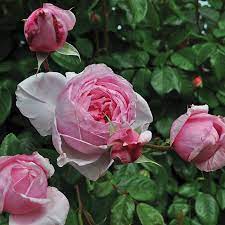
- Scientific name: Rosa ‘Eden’
- Common names: Eden Rose 85, Pierre de Ronsard
- Family: Rosaceae
- Origin: France
- Height: 3-5 feet
- Bloom time: Late spring to early fall
- Flowers: Creamy white, suffused with pink most intensely at the edge of the petals
- Leaves: Dark green, oval
- Soil: Well-drained, loamy soil
- Sun exposure: Full sun to partial shade
- Watering: Water regularly, especially during hot, dry weather
- Fertilizer: Fertilize monthly with a balanced fertilizer
- Pests and diseases: Susceptible to black spot, powdery mildew, and aphids
- Propagation: Cuttings, air layering
- Hardiness zone: 6-9
- Significance: Symbolizes love, purity, and fidelity
- Uses: Ornamental plant, cut flower
- Toxicity: None
History of Eden Rose 85
Eden Rose 85 was bred by Marie-Louise Meilland in France in 1985. It was named after the biblical Garden of Eden, and it was intended to be a symbol of love, purity, and fidelity.
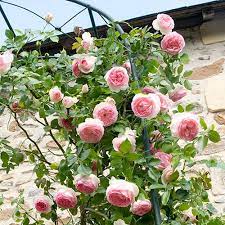
- National flower: Eden Rose 85 is not the national flower of any country.
- Cultural status: Eden Rose 85 is not a particularly significant flower in any particular culture. However, it is a popular ornamental plant in many countries around the world.
- Symbolism: Eden Rose 85 is often associated with love, purity, fidelity, and the Garden of Eden. It is also said to symbolize hope, new beginnings, and happiness.
- Uses: Eden Rose 85 is primarily used as an ornamental plant. It is also used to make cut flowers, and it is sometimes used in perfumes.
- Toxicity: Eden Rose 85 is not toxic to humans or animals.
Here are some additional facts about Eden Rose 85:
- The name “Eden Rose 85” comes from the year it was bred, 1985.
- Eden Rose 85 is a hybrid tea rose, which means it is a cross between a tea rose and a hybrid perpetual rose.
- Eden Rose 85 is a popular ornamental plant, and it is often used in gardens, flower arrangements, and bouquets.
- Eden Rose 85 is relatively easy to care for, and it is a good choice for gardens in Zones 6-9.

